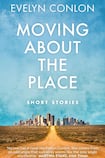
Why is Evelyn Conlon not more often spoken of in the same breath as contemporaries Colm Tóibín, John Banville and Sebastian Barry? Not that I am descending on the paper of record to cast an Aosdána member as some sort of literary urchin: Conlon is a deservedly acclaimed practitioner of Irish fiction.
Her latest story collection – with acknowledgments stating that earlier versions of some of the stories have been published widely in Ireland as well as Italy, China and Canada – proves that it should be impossible to discuss her generation’s achievements without addressing Conlon’s own.
The protagonists of this 11-story volume can be grouped into researchers and researched: those chasing a mystery, and those who are one. The truth-seekers include petty Joyceans and an Irish emigrant revisiting his late parents’ lives, while subjects of scrutiny range from Violet Gibson, who shot Mussolini, to suffragist Mary Walsh – referenced by her married name, Mary Lee, in a later story.
Of course, the division is never that simple. Violet Gibson seeks contact with her letter’s addressee; the grieving son learns about himself, not just his parents.
Conlon finds depth in turning a story, and humour in turning a sentence: “Monsieur Black was not in that league, hovered below the first rung of it, but he was accepted in this circle for other reasons and no one knew quite what those reasons were.” She has a longstanding interest in Australia, and her frequent antipodean references wink at you with their combined randomness and specificity.
What business has Wollongong in an Irish short story? Plenty, Conlon seems to say, and marches on. Such hints appear like breadcrumbs until the final 68-page story (or short novella) about Irishwoman Hannah Grogan’s 1970s assisted passage to the place itself. She’s barely processed her first new normal before her husband winds up in hospital.
Along with Hannah’s story, I was most rapt at The Lie of the Land, a biting takedown of liberal sanctimony and a poignant tale of a dying marriage; the stakes are through the roof and you need to know what happens. Less compelling were Virgin Birth and Up at the Library, which view Hiroshima and Monaco at a remove too disinvolved to gather urgency. The writing remains truthful thanks to Conlon’s gifts, but I was more convinced that these stories were real than that they mattered.
There goes the distinction between seeker and sought: we're never solely one or the other because the world does not stay fixed. That's daunting, but freeing, too
Yet this variation in narrative tension might be necessary to let the most intense stories shine, since stylistically there’s not much difference, beyond, say, a more elaborate syntax for a woman born in 1821 than for a schoolboy. Even references repeat themselves: is it deliberate that, two stories apart, both that same child and a 1970s emigrant make the same observation about Australian voices turning up at the end?
But the older Irishman also ponders whether the intonation mightn’t rise elsewhere – and now I’m wondering if they’re the same character, or if the resonance comments on the idea of a place versus the place itself. Conlon’s poised wisdom leaves you certain that she means every word.
Besides the obvious reason that Irish women are not vaunted at the level of similarly accomplished men, Conlon’s subtlety might explain it. (The two factors are linked. Male authors of pinot books, dark chocolate books, books you’ll love once you’ve taught yourself how, tend to find readerly effort more forthcoming.)
Her restraint is not to be confused with repression: there is heart in these stories, and Conlon holds back so that it means something when she lets go. Each sentence advances the story and is a work of art. Here is a description of the sky, one of the more challenging prosaic hurdles precisely because everyone jumps it. Conlon’s rendition is word-perfect, efficiently expository and gorgeous to live in:
“The rain had cleaned the air, then disappeared, performed a flash withdrawal as it could in this country. How could rain be so different to what she had grown up with? The sky above the harbour was on fire, begging for a twilight. But it would soon be dark, no gradual dimming of its splendour, just a sudden dropping into the sea. Maybe there would be stars on her way home, and she could look up into the sky, making new maps to go with the new stars that were now hers, no matter what she wanted.”
What does it mean to move about the place? The final story suggests that closure is an illusion: “[M]aybe she would come up with a plan for a new way of living, if there could be one. Or maybe not.”
There goes the distinction between seeker and sought: we’re never solely one or the other because the world does not stay fixed. That’s daunting, but freeing, too.
Naoise Dolan is the author of Exciting Times










